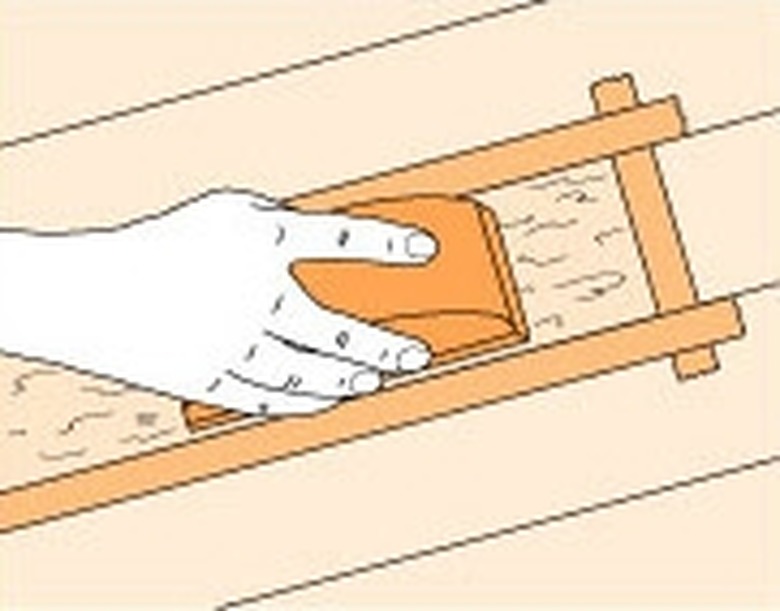How To Repair A Water-Damaged Hardwood Floor
Things Needed
-
Oxalic Acid Crystals
-
Fine Steel Wool
-
Brush Or Sponge
-
Painter's Masking Tape
-
Soft Cotton Cloths
-
Very Mild Abrasive
-
Rubber Gloves
-
Goggles
-
Sandpaper
-
Rubber Sanding Block Or Random-orbit Sander
Tip
Choose the least aggressive approach that yields the desired results.
Warning
Using excessive or concentrated pressure when buffing out a stain with even a mild abrasive can mar the finish. Carefully follow all safety advice on oxalic acid packaging, such as wearing rubber gloves and goggles.
Wood and water just don't mix. Sealed and waxed floors may become stained if water sits on their surface for more than a few minutes. Here's how to repair the damage.
Step 1
To remove a smoky white haze or a white spot, buff the finish with a soft cotton cloth and a very mild abrasive, such as whitening toothpaste, auto-polishing compound, or tobacco ash mixed with mineral oil, until the stain disappears (see A).
Step 2
Mask off the surrounding boards with painter's masking tape.
Step 3
First remove any wax or surface finish. Use fine steel wool to remove wax, and sandpaper to remove a surface finish. Depending on the size of the repair area, hand-sand with a rubber sanding block (see B) or machine-sand with a random-orbit sander. In both cases, start with 80- or even 60-grit abrasive and sand to 100-grit. Sand just up to the edges of unaffected boards.
Step 4
Mix oxalic acid crystals (available at paint or hardware stores) in 1 cup (8 fl oz/250 ml) or so of hot water and stir to dissolve them. Keep adding crystals until they won't dissolve anymore.
Step 5
Pour, brush or sponge the solution on the stained area. When it is completely dry, brush off the crystals and repeat the process until the stain is gone.
Step 6
Stain or seal, then refinish the affected area (see How to Replace a Wood Floorboard). Or, if the touch-up stands out too much, use the screen-and-overcoat method to restore the entire floor (see How to Restore a Dull, Worn Wood Floor).

